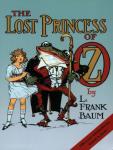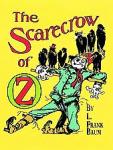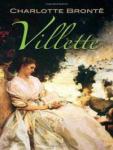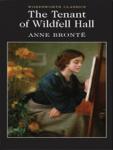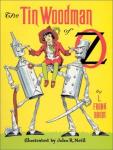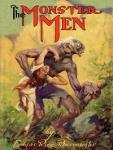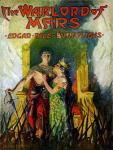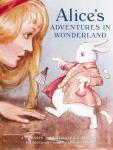A Tale of Two Cities
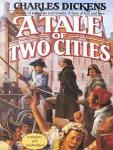
A Tale of Two Cities (1859) is a novel by Charles Dickens, set in London and Paris before and during the French Revolution. With well over 200 million copies sold, it ranks among the most famous works in the history of fictional literature.The novel depicts the plight of the French peasantry demoralized by the French aristocracy in the years leading up to the revolution, the corresponding brutality demonstrated by the revolutionaries toward the former aristocrats in the early years of the revolution, and many unflattering social parallels with life in London during the same time period. It follows the lives of several protagonists through these events. The most notable are Charles Darnay and Sydney Carton. Darnay is a French once-aristocrat who falls victim to the indiscriminate wrath of the revolution despite his virtuous nature, and Carton is a dissipated English barrister who endeavours to redeem his ill-spent life out of his unrequited love for Darnay's wife. The 45-chapter novel was published in 31 weekly installments in Dickens' new literary periodical titled All the Year Round. From April 1859 to November 1859, Dickens also republished the chapters as eight monthly sections in green covers. All but three of Dickens' previous novels had appeared only as monthly installments. The first weekly installment of A Tale of Two Cities ran in the first issue of All the Year Round on 30 April 1859. The last ran thirty weeks later, on 26 November.
Contents
- Book 1 - Recalled to Life Chapter 1 - The Period
- Book 1 - Recalled to Life Chapter 2 - The Mail
- Book 1 - Recalled to Life Chapter 3 - The Night Shadows
- Book 1 - Recalled to Life Chapter 4 - The Preparation
- Book 1 - Recalled to Life Chapter 5 - The Wine-shop
- Book 1 - Recalled to Life Chapter 4 - The Shoemaker
- Book 2 - the Golden Thread Chapter 1 - Five Years Later
- Book 2 - the Golden Thread Chapter 2 - A Sight
- Book 2 - the Golden Thread Chapter 3 - A Disappointment
- Book 2 - the Golden Thread Chapter 4 - Congratulatory
Related Books
Author other works
-
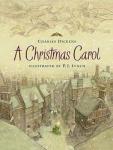
A Christmas Carol
Charles Dickens
A Christmas Carol is a novella by English author Charles Dickens, first published by Chapman & Hall on 19 December 1843. The story tells of sour and stingy Ebenezer Scrooge's ideological, ethical, and emotional transformation resulting from supernatural visits from Jacob Marley and the Ghosts of Christmas Past, Present, and Yet to Come. The novella met with instant success and critical acclaim.The book was written and published in early Victorian Era Britain, a period when there was both strong nostalgia for old Christmas traditions and an initiation of new practices such as Christmas trees and greeting cards. Dickens's sources for the tale appear to be many and varied but are principally the humiliating experiences of his childhood, his sympathy for the poor, and various Christmas stories and fairy tales.The tale has been viewed by critics as an indictment of 19th-century industrial capitalism. It has been credited with restoring the holiday to one of merriment and festivity in Britain and America after a period of sobriety and sombreness. A Christmas Carol remains popular, has never been out of print, and has been adapted to film, stage, opera, and other media multiple times.
-
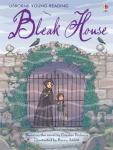
Bleak House
Charles Dickens
Bleak House is a novel by Charles Dickens, published in 20 monthly instalments between March 1852 and September 1853. It is held to be one of Dickens' finest novels, containing one of the most vast, complex and engaging arrays of minor characters and sub-plots in his entire canon. The story is told partly by the novel's heroine, Esther Summerson, and partly by a mostly omniscient narrator. Memorable characters include the menacing lawyer Tulkinghorn, the friendly but depressive John Jarndyce, and the childish and disingenuous Harold Skimpole, as well as the likeable but imprudent Richard Carstone.Sir Leicester Dedlock and Honoria, Lady Dedlock (his junior by more than 20 years) live at his estate of Chesney Wold. Unknown to Sir Leicester, Lady Dedlock had a lover, Captain Hawdon, before she married Sir Leicester — and had a child by him, Esther Summerson. Lady Dedlock, believing her daughter is dead, has chosen to live out her days 'bored to death' as a fashionable lady of the world.Esther is raised by Miss Barbary, Lady Dedlock's spartan sister, who instills a sense of worthlessness in her that Esther will battle throughout the novel. Esther doesn't know that Miss Barbary is her aunt, thinking of her only as her godmother. When Miss Barbary dies, the Chancery lawyer Conversation Kenge takes charge of Esther's future on the instruction of his client, John Jarndyce. Jarndyce becomes Esther's guardian, and after attending school in Reading for six years, Esther moves in with him at Bleak House, along with his wards, Richard Carstone and Ada Clare. Esther is to be Ada's companion.Esther soon befriends both Ada and Richard, who are cousins. They are beneficiaries in one of the wills at issue in Jarndyce and Jarndyce; their guardian is a beneficiary under another will, and in some undefined way the two wills conflict. Richard and Ada soon fall in love, but though Mr. Jarndyce doesn't oppose the match, he stipulates that Richard (who is inconstant) must first choose a profession. Richard first tries the medical profession, and Esther first meets the newly-qualified Dr. Allan Woodcourt at the house of Richard's prospective tutor, Mr. Baynham Badger. When Richard mentions the prospect of gaining from the resolution of Jarndyce and Jarndyce, John Jarndyce beseeches him never to put faith in what he calls "the family curse".Meanwhile, Lady Dedlock is also a beneficiary under one of the wills in Jarndyce and Jarndyce. Early in the book, while listening to her solicitor, the close-mouthed but shrewd Mr. Tulkinghorn, read an affidavit aloud, she recognizes the handwriting on the copy. The sight affects her so much that she almost faints, which Tulkinghorn notes and thinks should be investigated. He traces the copyist who turns out to be a pauper known only as "Nemo" who has recently died. The only person to identify him is a street-sweeper, a poor homeless boy named Jo.Lady Dedlock also investigates the matter disguised as her French maid, Mademoiselle Hortense. She pays Jo to take her to Nemo's grave. Meanwhile, Tulkinghorn is convinced that Lady Dedlock's secret might threaten the interests of his client, Sir Leicester Dedlock, and watches her constantly, even enlisting the maid, who detests her.Esther meets her mother at church and talks with her later at Chesney Wold - though, at first, neither woman recognizes the tie that binds them. Later, Lady Dedlock realizes that her abandoned child is not dead and is, in fact, Esther. She waits to confront Esther with this knowledge until Esther survives an unidentified disease (possibly smallpox, as it permanently disfigures her), which she got from the homeless boy Jo after Esther and her maid Charley attempted to nurse him back to health. Though they are happy to be reunited, Lady Dedlock tells Esther that they must never acknowledge their connection again.Esther recovers, but her beauty is supposedly ruined. She finds that Richard, having failed at several professions, has ignored his guardian and is wasting his resources in pushing Jarndyce and Jarndyce to conclusion (in his and Ada's favour). Further, he has broken with his guardian, under the influence of his lawyer, the odious and crafty Mr. Vholes. In the process of becoming an active litigant, Richard has lost all his money and is breaking his health. In further defiance of John Jarndyce, he and Ada have secretly married, and Ada is carrying Richard's child. Esther experiences her own romance when Dr. Woodcourt returns to England, having survived a shipwreck, and continues to seek her company despite her disfigurement. Unfortunately, Esther has already agreed to marry her guardian, John Jarndyce.Hortense and Tulkinghorn discover Lady Dedlock's past. After a quiet but desperate confrontation with the lawyer, Lady Dedlock flees her home, leaving a note apologizing for her conduct. Tulkinghorn dismisses Hortense, no longer any use to him. Feeling abandoned and betrayed by Lady Dedlock and Tulkinghorn, Hortense kills Tulkinghorn and seeks to frame Lady Dedlock for his murder. Sir Leicester discovers his lawyer's death and his wife's flight, and he has a catastrophic stroke but manages to communicate that he forgives his wife and wants her to return to him.Inspector Bucket, who up to now has investigated several matters on the periphery of Jarndyce and Jarndyce, accepts the commission of the stricken Sir Leicester to find Lady Dedlock. He suspects Lady Dedlock, even after he arrests George Rouncewell (the only other person known to be with Tulkinghorn on the night of the murder and to have quarrelled with him repeatedly). Bucket asks Esther to help search for Lady Dedlock. By this point, Bucket has cleared Lady Dedlock by discovering Hortense's guilt, but Lady Dedlock has no way to know this and wanders the country in cold weather before dying at the cemetery of her former lover Captain Hawdon (Nemo). Esther and Bucket find her there.Developments in Jarndyce and Jarndyce seem to take a turn for the better when a later will is found which revokes all previous wills and leaves the bulk of the estate to Richard and Ada. Meanwhile, John Jarndyce cancels his engagement with Esther, who becomes engaged to Dr. Woodcourt. They go to Chancery to find Richard and to discover what news there might be of the lawsuit's resolution. To their horror, they learn that the new will has no chance to resolve Jarndyce and Jarndyce, for the costs of litigation have consumed the estate. Richard collapses, and Dr Woodcourt determines that he is in the last stages of tuberculosis. Richard apologizes to John Jarndyce and dies, leaving Ada alone with their child, a boy she names Richard. Jarndyce takes in Ada and the child. Esther and Woodcourt marry and live in a Yorkshire house which Jarndyce gives to them. In time, they have two daughters.Many of this intricate novel's subplots deal with the minor characters and their diverse ties to the main plot. One of these subplots is the hard life and happy though difficult marriage of Caddy Jellyby and Prince Turveydrop. Another focuses on George Rouncewell's rediscovery of his family at Chesney Wold and his reunion with his mother and brother.
-
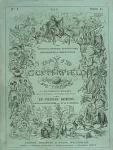
David Copperfield
Charles Dickens
David Copperfield is the common name of the eighth novel by Charles Dickens, first published as a novel in 1850. Its full title is The Personal History, Adventures, Experience and Observation of David Copperfield the Younger of Blunderstone Rookery (Which He Never Meant to Publish on Any Account). Like most of his works, it originally appeared in serial form during the two preceding years. Many elements of the novel follow events in Dickens' own life, and it is probably the most autobiographical of his novels. In the preface to the 1867 edition, Dickens wrote, "...like many fond parents, I have in my heart of hearts a favourite child. And his name is David Copperfield."The story traces the life of David Copperfield from childhood to maturity. David was born in Blunderstone, Suffolk, near Great Yarmouth, Norfolk, England, in 1820, six months after the death of his father. David spends his early years with his mother and their housekeeper, Peggotty. When he is seven years old, his mother re-marries Edward Murdstone. David is given good reason to dislike his stepfather and has similar feelings for Murdstone's sister Jane, who moves into the house soon afterwards. Murdstone thrashes David for falling behind in his studies. Following one of these thrashings, David bites him and soon afterwards is sent away to a boarding school, Salem House, with a ruthless headmaster, Mr. Creakle. There he befriends James Steerforth and Tommy Traddles.David returns home for the holidays to learn that his mother has given birth to a baby boy. Shortly after David returns to Salem House, his mother and her baby die and David returns home immediately. Peggotty marries a man named Mr Barkis. Murdstone sends David to work in a wine merchant in London, of which Murdstone is a joint owner.[4] Copperfield's landlord, Wilkins Micawber, is sent to debtors' prison (the King's Bench Prison) and remains there for several months before being released and moving to Plymouth. No one remains to care for David in London, so he decides to run away.He walks from London to Dover, where he finds his only relative, his unmarried, eccentric aunt Betsey Trotwood. She agrees to raise him, despite Murdstone's attempt to regain custody of David. David's aunt renames him "Trotwood Copperfield" and addresses him as "Trot", and it becomes one of several names to which David answers in the course of the novel.As David grows to adulthood, a variety of characters enter, leave, and re-enter his life. These include Peggotty and her family, including her orphaned niece "Little Em'ly", who moves in with them and charms the young David. David's romantic but self-serving school friend, Steerforth, seduces and dishonours Little Em'ly, precipitating the novel's greatest tragedy, and his landlord's daughter Agnes Wickfield, becomes his confidante. The novel's two most familiar characters are David's sometime mentor, the debt-ridden Micawber, and the devious and fraudulent clerk, Uriah Heep, whose misdeeds are eventually revealed with Micawber's assistance. Micawber is painted sympathetically even as the narrator deplores his financial ineptitude. Micawber, like Dickens' own father, is briefly imprisoned for insolvency.The major characters eventually get some measure of what they deserve, and few narrative threads are left hanging. Peggotty's brother Dan safely transports Emily to a new life in Australia, accompanied by the widowed Mrs. Gummidge and the Micawbers. All eventually find security and happiness in their adopted country. David marries the beautiful but naïve Dora Spenlow, who dies after failing to recover from a miscarriage early in their marriage. David then searches his soul and marries the sensible Agnes, who had always loved him and with whom he finds true happiness. David and Agnes then have at least four children, including a daughter named after his aunt Betsey Trotwood.
-
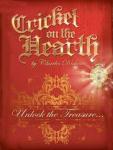
The Cricket on the Hearth
Charles Dickens
The Cricket on the Hearth. A Fairy Tale of Home is a novella by Charles Dickens.John Peerybingle, a carrier, lives with his young wife Dot, their baby boy and their nanny Tilly Slowboy. A cricket constantly chirps on the hearth and acts as a guardian angel to the family. One day a mysterious elderly stranger comes to visit and takes up lodging at Peerybingle's house for a few days.The life of the Peerybingles intersects with that of Caleb Plummer, a poor toymaker employed by the miser Mr. Tackleton. Caleb has a blind daughter Bertha, and a son Edward, who traveled to South America and was thought dead.The miser Tackleton is now on the eve of marrying Edward's sweetheart, May, but she does not love Tackleton. Tackleton reveals to John Peerybingle that his wife Dot has allegedly cheated on him and shows him a clandestine scene where Dot embraces the mysterious lodger who is in disguise, a man much younger than he actually seems. John is cut to the heart over this as he loves his wife dearly, but decides after some deliberations to relieve his wife of their marriage contract.In the end, the mysterious lodger is revealed to be none other than Edward who has returned home in disguise. Dot shows that she indeed has been faithful to John. Edward marries May hours before she is scheduled to marry Tackleton. However Tackleton's heart is melted by the Christmas season, like Ebenezer Scrooge, and he surrenders May to her true love.
-
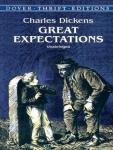
Great Expectations
Charles Dickens
Great Expectations is Charles Dickens' thirteenth novel. It is the second novel, after David Copperfield, to be fully narrated in the first person. Great Expectations is a bildungsroman, or a coming-of-age novel, and the story genre is Victorian Literature. It depicts the growth and personal development of an orphan named Pip.On Christmas Eve, around 1812, Pip, an orphan who is about six years old, encounters an escaped convict in the village churchyard while visiting the graves of his mother, father, and siblings. The convict scares Pip into stealing food and a file to grind away his shackles from the home he shares with his abusive older sister and her kind, passive husband Joe Gargery, a blacksmith. The next day, soldiers recapture the convict while he is engaged in a fight with another convict; the two are returned to the prison ships they escaped from.Miss Havisham, a wealthy spinster, who wears an old wedding dress and lives in the dilapidated Satis House, asks Pip's "Uncle Pumblechook" (who is actually Joe's uncle) to find a boy to play with her adopted daughter Estella. Pip begins to visit Miss Havisham and Estella, with whom he falls in love with Miss Havisham's encouragement. Pip visits Miss Havisham multiple times, and during one of these visits, he brings Joe along. During their absence, Mrs. Joe is attacked by a mysterious individual and lives out the rest of her life as a mute invalid.Later, when Pip is a young apprentice at Joe's blacksmith shop, a lawyer, Mr. Jaggers, approaches him and tells him he is to receive a large sum of money from an anonymous benefactor and must immediately leave for London, where he is to become a gentleman. Assuming that Miss Havisham is his benefactress, he visits her and Estella, who has returned from studying on the Continent.Years later, Pip has reached adulthood and is now heavily in debt. Abel Magwitch, the convict he helped, who was transported to New South Wales where he eventually became wealthy, reveals himself to Pip as his benefactor. There is a warrant for Magwitch's arrest in England, and he will be hanged if he is caught. Pip and his friends Herbert Pocket and Startop hatch a plan for Magwitch to flee by boat. Pip also discovers that Estella is the daughter of Magwitch and Mr. Jaggers' housemaid, Molly, whom Jaggers defended in a murder charge and who gave up her daughter to be adopted by Miss Havisham.Pip learns that Miss Havisham's fiancé jilted her, resulting in her strange behaviour and desire to avenge mankind by using Estella to break Pip's heart. He confronts Miss Havisham with Estella's history. Miss Havisham stands too close to the fire which ignites her dress. Pip is burned while saving her, but she eventually dies from her injuries, lamenting her manipulation of Estella and Pip.A few days before the escape, Joe's journeyman, Orlick, who was responsible for the attack on Mrs. Joe, attacks Pip. Herbert Pocket and his friends save Pip and prepare for the escape.During the escape, Magwitch kills his enemy Compeyson, a con artist and Miss Havisham's fiancé. Police capture Magwitch and jail him. Pip visits a deathly ill Magwitch in jail and tells him Estella is alive. Barely alive, Magwitch responds with a squeezing of Pip's palm and dies shortly after, before his execution. Pip is about to be arrested for unpaid debts when he falls ill. Joe nurses him back to health and pays off Pip's debts. Pip realises that in his fruitless pursuit of Estella and wealth, he has callously ignored Joe. Realising the error of his ways, Pip returns to propose to Biddy, only to find that she and Joe have married.Pip asks Joe for forgiveness, and Joe forgives him. As Pip has lost his fortune upon Magwitch's death, he is no longer a gentleman. Pip promises to repay Joe and goes to Egypt, where he shares lodgings with Herbert and Clara and works diligently as a clerk.Eleven years later, Pip visits the ruins of Satis House and meets Estella, whom her dead husband abused. She asks Pip to forgive her, assuring him that misfortune has opened her heart and that she now empathises with Pip. As Pip takes Estella's hand and leaves the ruins of Satis House, he sees "no shadow of another parting from her."
